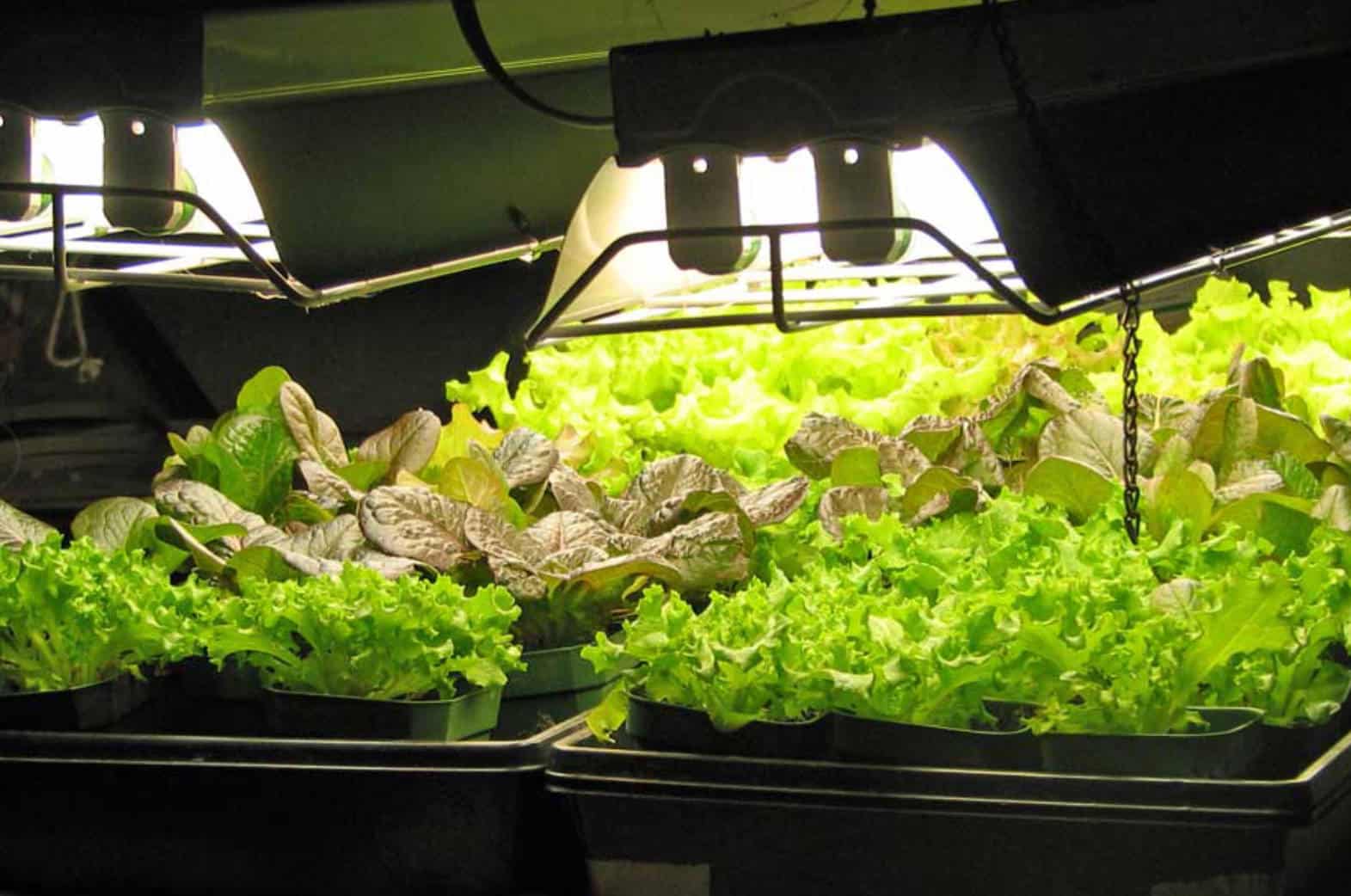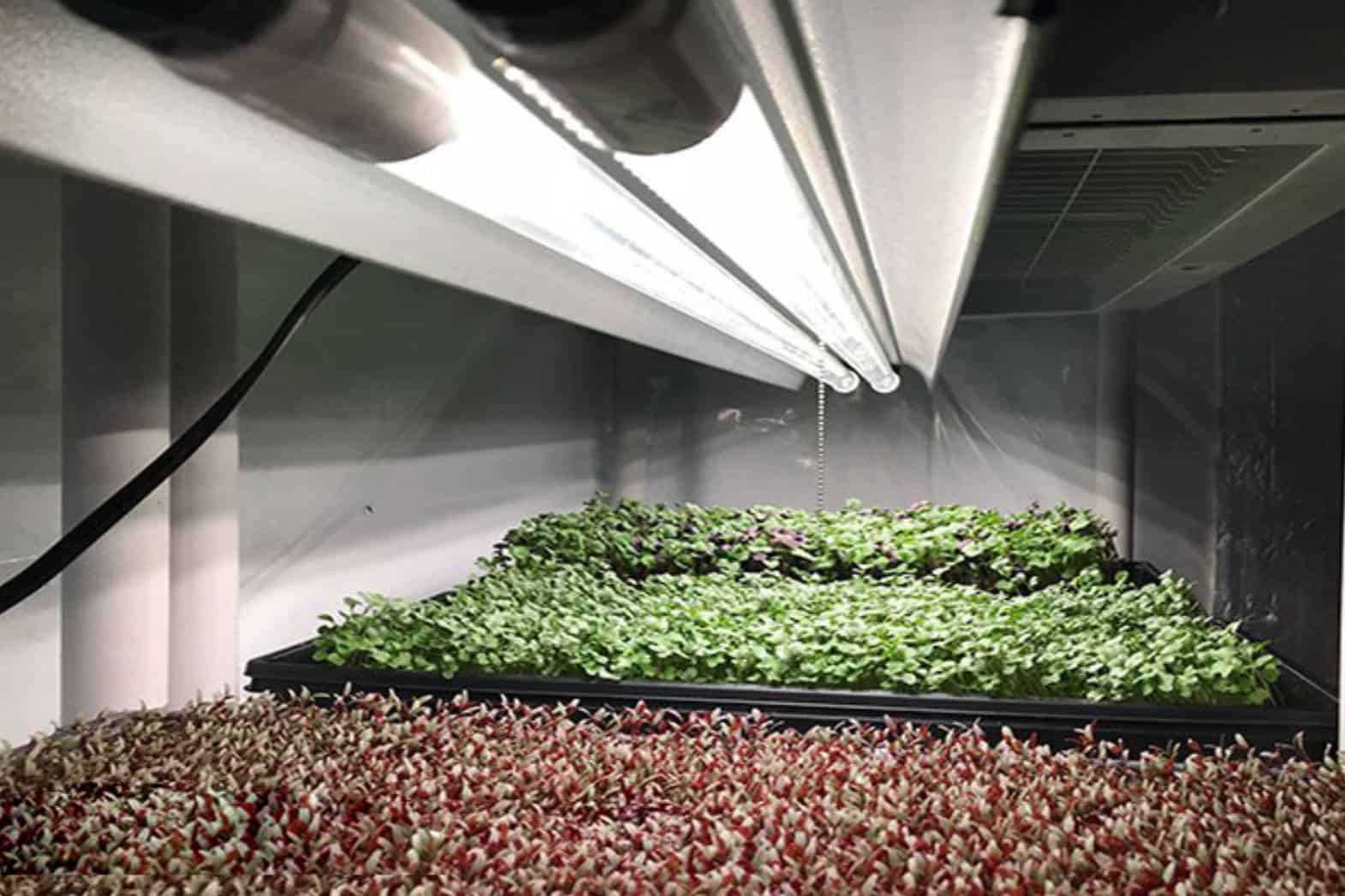When growing an indoor plant, you need to mimic how they grow naturally under the sun. Don’t fret! This article will tell you about the comparisons between LED vs. Fluorescent grow lights.
What are Grow Lights
Grow lights are a source of heat and nourishment for your indoor plants. They are great for people who wish to keep their plants away from natural light.
If you live in a secluded room or apartment where your plant wouldn’t get enough sunlight, grow lights are a great help. Grow lights are also great for light and heat-sensitive plants. The lights will aid the plants with the vegetation and germination of the plants.
Grow lights mimic the light spectrum in a more controlled manner than the sun’s natural spawned light.
An Overview of LED Grow Lights
LED grow lights are a new addition to the type of grow lights available in the market. With the process of electroluminescence, light-emitting diodes turn their semi-conductive properties to light. LED lights use electric currents to produce light with different visual spectrums.
LED grow lights are considered a fourth-generation when it comes to developing artificial lighting used for growing plants. They are invented long after earlier grow lights such as fluorescent and incandescent lights.
It’s pretty straightforward when choosing what LED grow lights will suit you as there is only one variation, unlike with fluorescent grow lights.
An Overview of Fluorescent Grow Lights
Fluorescent grow lights are a type of light source which uses fluorescence to produce light. The mercury vapor triggers the phosphor by passing an electric current through the gas. The process produces ultraviolet radiation, which results in light.
Fluorescent lights have two standard types for you to choose from, compact fluorescent light (CFL) fluorescent light tubes. Even though there are only two typical fluorescent lights commonly used in the market, you can also use cold cathode fluorescent light (CCFL).
Compact Fluorescent Light (CFL)
Compact fluorescent lights are a mini version of fluorescent lamps. CFLs are designed to pre-heat lamps, but many manufacturers produce compact fluorescent lights designed as grow lights due to innovation.
CFLs increased with a variety of different sizes. They now come in 125W, 200W, 250W, and 300W. Due to better light production, larger compact fluorescent lights are the most common type used as a grow light.
Fluorescent Light Tubes
Fluorescent light tubes are commonly used to grow seedlings and vegetables. It’s significantly brighter compared to compact fluorescent lights or high-intensity discharge lamps.
Compact fluorescent lights and fluorescent light tubes can be confused as the fluorescent lights commonly used in most houses. Although, you can easily differentiate with their sizes and light emission.
LED vs. Fluorescent Grow Lights Comparison
Here are the differences between LED and fluorescent grow lights.
Light Spectrum
Grow lights are primarily used to mimic the light from the sun.
LED lights have a customizable light spectrum. You can set and customize the light spectrum present with LED grow lights. The feature is incredible for combining and setting specific light spectrums that can be adjusted as your plants grow.
On the other hand, fluorescent grow lights mostly come with white light, red, and blue. The colors present on fluorescent lights are incredible for growing plants and seedlings. Fluorescent grow lights mostly come with the standard warm, cool, and full light variation.
Heat Output
LED lights have l than fluorescent lights since they use electroluminescence rather than ultraviolet radiation. Most LED grow lights also have a small fan attached to the system.
Fluorescent grow lights produce higher heat output using ultraviolet radiation rather than electroluminescence. Due to the heat output, you will need a cooling system to avoid damaging your rays.
Both grow lights can produce a lot of heat, especially if you have a bigger grow light system. Having a designated cooling system will help tremendously as high heat can’t just ruin your lights but also damage the plants you cultivated.
Durability and Lifespan
LED lasts around five to ten times longer than fluorescent lights. LED grow lights can last up to 30000 to 50000 hours, while fluorescent lamps can last up to 8000 to 20000 hours. You can get the same amount of light with half the energy usage.
LED units also have more durability than fluorescent lights. Fluorescent lights can easily be damaged and contain dangerous material such as mercury.
Since LED grow lights rely on a solid diode rather than a gas reaction, they can last more and have a lesser risk of damage over time.
Energy Usage
LED grow lights consume less energy than fluorescent lights. For example, a 300watt LED light can produce the same light as 600watt fluorescent lights. LED grow lights also consume less electricity than fluorescent lights.
Cost
LED lights cost higher than fluorescent grow lights. Even though LED grow lights have been more accessible and cheaper throughout the years, it’s still higher than common grow lights such as fluorescent and high-intensity discharge lamps.
There are many reasons why LED costs are higher than fluorescent grow lights, such as higher life span, energy efficiency, and safer materials.
LED vs. Fluorescent Grow Lights: Benefits and Disadvantages
To ease the choice between LED and fluorescent grow lights, let’s delve into their benefits and disadvantages. This is a more in-depth comparison compared to the section above.
Benefits | Disadvantages |
● Lower Energy Consumption ● Wider Variety ● Lower Temperature | ● Higher Price ● Heat Sensitivity |
Benefits of LED Grow Lights
LED grow lights have a lot of benefits, but the primary two of them are lower energy consumption and efficiency.
As stated above, LED lights can create the same light as fluorescent lights for half the energy consumption. If you have a long-running indoor garden, it’s best to get the energy-efficient option.
You can have a large variety of color and light spectrum options perfect for stimulating your plant at every stage of its growth. The feature is also great for controlling the temperature inside your garden.
The lower temperature can also be great for temperature-sensitive plants such as hydroponics.
Disadvantages of LED Grow Lights
One of the most concerning disadvantages of LED lights is their price. Most LED lights can cost up to three to five times more than their counterparts.
The higher cost can be detrimental to someone new with indoor planting or hobbyists. Although, the cost can be evened out over time.
The wide variety of color and light spectrum can also be a disadvantage. If you are new to growing lights, you can become overwhelmed with the options.
Although LED lights are pretty durable, they also have a weak spot. LED chips are susceptible to heat. It’s recommended to have proper ventilation indoors, especially if you have an extensive LED lights system.
Benefits | Disadvantages |
● Higher Heat Output ● Cost-Effective ● Beginner Friendly ● Wider Unit Option | ● Large Energy Consumption ● Shorter Lifespan ● Contains Mercury |
Benefits of Fluorescent Lights
Fluorescent lights produce higher heat output, this feature can be a disadvantage, but you can also use it as a benefit. You can hang the fluorescent lights higher, which results in broader coverage. You keep the proper heat and serve it to more plants.
Another pro is that fluorescent grow lights are cost-effective. If you are new to indoor gardening yet unsure about your practices, investing in fluorescent lights is better than pouring money into pricey LED lights.
On that note, fluorescent lights are also beginner-friendly. Most units are easy to install and use, so fluorescent lights are perfect for you even if you have no experience with grow lights.
Although the light spectrum and color wavelength are rigid with fluorescent lights, you can have various unit options. Some fluorescent lights have specific units for the types and stages of your plant. Fluorescent grow lights are versatile for types, shapes, color, and uses.
Disadvantages of Fluorescent Lights
Fluorescent grow lights are not as energy-efficient compared to LED lights. Although fluorescent lights produce tremendous heat, they also consume more electricity. So even though they have lower costs, they can also increase your electric bill over time.
The short life span of the fluorescent lights can also be a detriment. You might need to change your grow lights every few months if you plan to raise a garden for a more extended period.
Another one is that fluorescent lights contain mercury. Heavy metals can cause health risks, especially if you don’t dispose of them properly. If a fluorescent light breaks, it can release mercury vapor which is very dangerous when inhaled.
In Conclusion
To know which grow light is for you, you need to keep your preferences in mind. If you want a cost-effective but grow light with a shorter lifespan, use a fluorescent light.
It’s great for hobbyists and a small indoor garden. If you are a more seasoned indoor practitioner of horticulture, you can opt for an LED grow light.
Whether you choose LED or fluorescent grow lights, knowing how to take care of your indoor plants is the most important thing.





